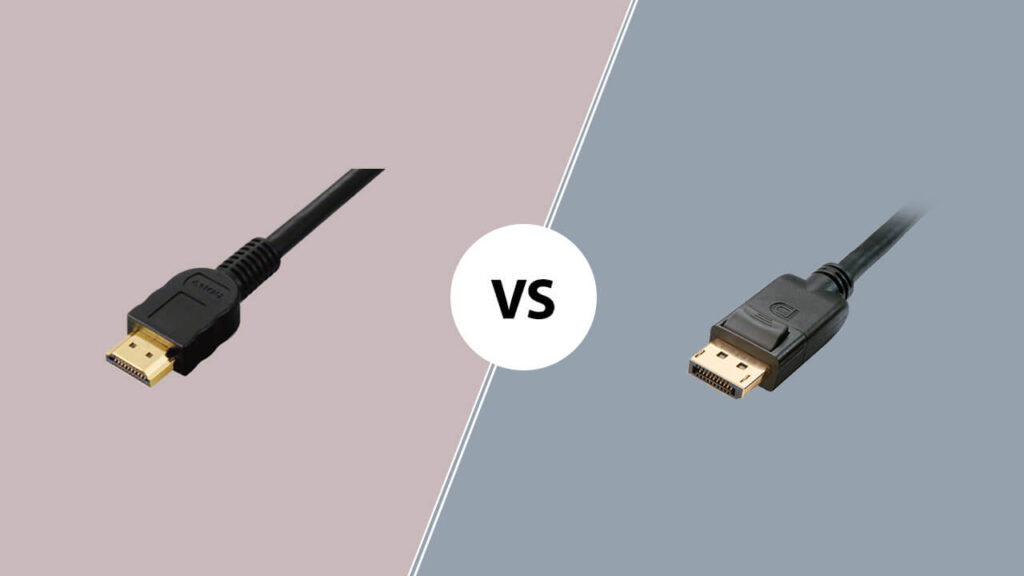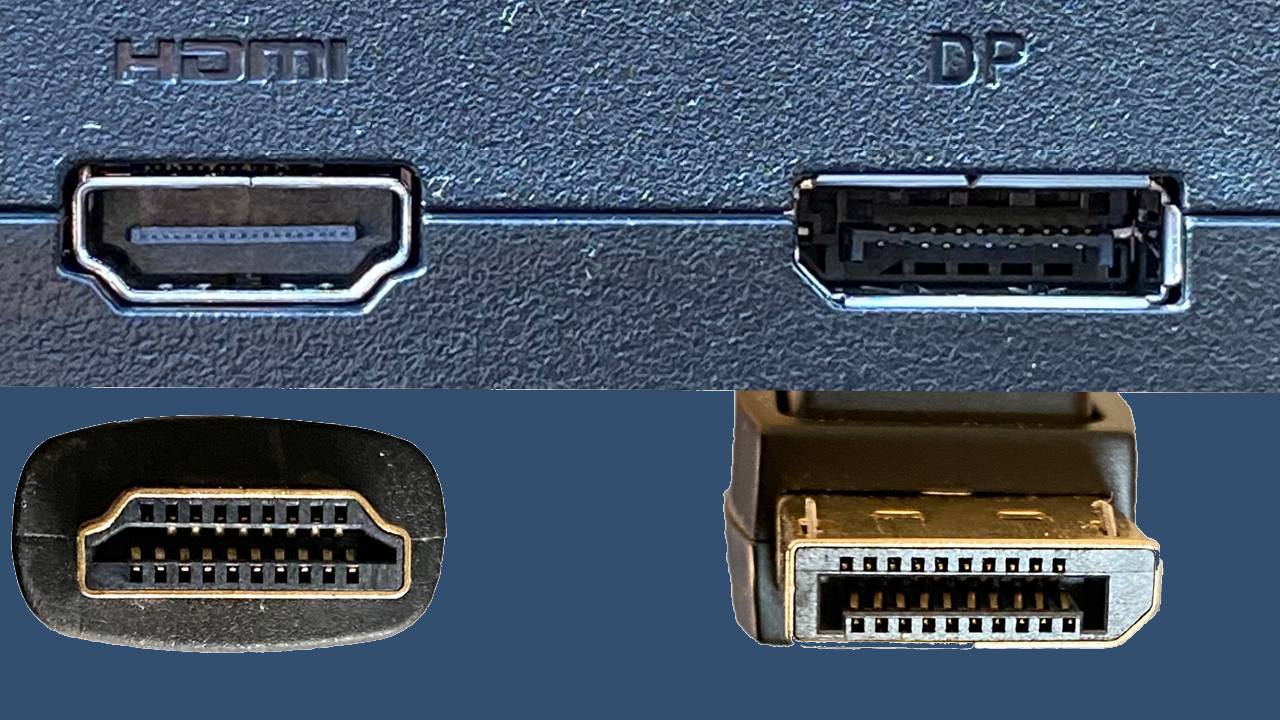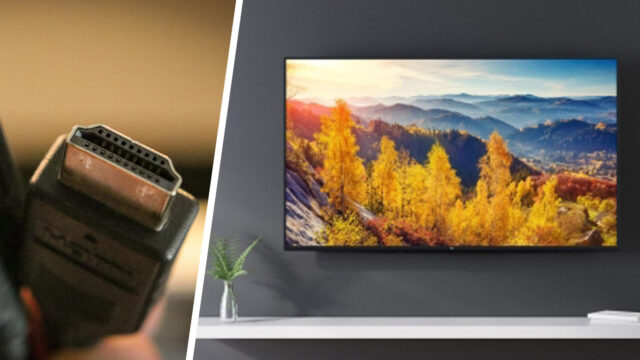Users often prefer connection options like HDMI or DisplayPort to connect external displays to laptops or monitors to desktop computers. In fact, there are significant differences between these two options. Here, you can discover which one is more suitable for you and your needs by comparing the features of DisplayPort and HDMI.
HDMI or DisplayPort?
If you’re a tech user, you’ve probably heard of HDMI. HDMI has solidified its position as a common display interface in the last twelve years. However, DisplayPort competes strongly with HDMI. Currently, many PC enthusiasts prefer DisplayPort over HDMI.

You can connect external displays to your computer using both connection ports. Therefore, if you’re new to computer hardware topics, you may find it difficult to choose between them. However, there are many differences that separate them. Let’s start comparing these two technologies from their past.
DisplayPort’s first version approved by VESA dates back to 2006. It went through four major revisions in the next decade. In 2019, DisplayPort 2.0 was released. On January 8, 2024, VESA introduced the latest version, DisplayPort 2.1a. With this version, it increased the data transmission speed of two-meter cables to 54GB/s.
On the other hand, HDMI was released in the late 2002, making it much older than DisplayPort. Like DisplayPort, HDMI also went through many revisions over the next decade. The 2.0 version was released in 2013. HDMI’s latest version, 2.1b, was a minor update released on August 10, 2023.
Physical Features and Types
One of the biggest differences between DisplayPort and HDMI is the number of pins in the connection ports. DisplayPort has two types: the standard version and the mini version introduced by Apple in 2008. Both types of DisplayPort have the same 20-pin layout.
HDMI, on the other hand, has five types, each with a different number of pins. HDMI Type A is the most common, with 19 pins. In contrast, Type B or Extended HDMI carries 29 pins, but it’s used in fewer products compared to others. Additionally, there are Mini HDMI (Type C) and Micro HDMI (Type D) connectors, which concentrate the 19-pin design of the standard HDMI socket into a smaller form factor.
Mini HDMI sockets are used in tablets, laptops, and portable monitors, while even smaller Micro HDMI connections are used in small devices like the Raspberry Pi. Finally, some devices support HDMI Type E, which includes a locking tab to prevent the cable from accidentally being removed.
Standard DisplayPort connectors have a locking mechanism. Therefore, you need to press the latch to remove the cable from your screen. On the other hand, except for Type E connectors, most HDMI interfaces don’t have a locking mechanism or latch.
Maximum Resolution, Frequency, and Bandwidth
When comparing the latest versions of both interfaces, DisplayPort 2.1 surpasses HDMI 2.1 in pure performance. With the Ultra High Bit Rate (UHBR) 20 transmission mode, while HDMI’s bandwidth is 48 Gbps, DisplayPort 2.1 has an 80 Gbps bandwidth.
In terms of resolution, DisplayPort supports up to 16K at 60Hz, whereas HDMI 2.1 only supports 8K at 60Hz. Also, while HDMI 2.1 supports up to 240Hz at 1080p as the maximum refresh rates, DisplayPort 2.1 can support up to 900Hz.
Compatibility
HDMI is the industry standard for display interfaces in consumer devices. For example, most TVs and monitors have more HDMI ports than DisplayPort connections. Even newer consoles like PlayStation 5 and Xbox Series X/S only have HDMI interfaces instead of DisplayPort.
In contrast, DisplayPort 2.1 is used very little. Only AMD Radeon 7000 GPUs and a limited number of monitors are compatible with this new generation interface.
Multi-Device Connection (Daisy Chaining)
Using multiple monitors is very useful for tasks that require a wider screen. However, most devices do not have enough connection ports for different cables to connect multiple screens to the computer.
Daisy chaining is a way to connect multiple monitors to the computer using a single screen connection. Unlike HDMI, DisplayPort 1.2 and newer versions support Multi-Stream Transport (MST), a technology that splits video signals from your GPU to drive multiple monitors simultaneously.
ARC, eARC, and Ethernet Support
Both display interfaces have the ability to transfer audio signals to an external display. However, only HDMI supports Audio Return Channel (ARC). As the name suggests, ARC allows HDMI to send audio from the screen to an audio playback device, eliminating the need for additional audio cables. HDMI 2.1 also supports an enhanced version of ARC called eARC, thanks to its high bandwidth.
You might think that HDMI can only carry video and audio signals. However, through HDMI Ethernet Channel (HEC), HDMI can also provide internet access. Introduced in HDMI 1.4, HEC allows data and file exchange over the network.
After all these explanations, you may consider HDMI and DisplayPort interchangeable for average users who only want to connect a second screen to their computer without any noticeable difference.
Which One to Choose?
The choice between DisplayPort and HDMI depends on your specific needs and, more importantly, the HDMI/DisplayPort version supported by your devices. For example, if you want to play games at high refresh rates and have a compatible GPU, you may prefer DisplayPort 2.1.
On the other hand, if you’re a music enthusiast looking to set up a home theater system, you might consider HDMI 2.1 to utilize the eARC feature. However, for average users who just want to connect a second screen to their computer, either DisplayPort or HDMI can be used interchangeably without any noticeable difference.














